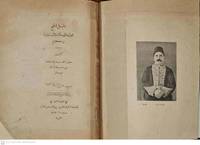
Histoires des Indes, De Jean Pierre Maffee Bergamesque, de la Societe de Jesus. Où, il est traicté de leur descouverte, navigation, & conqueste faicte tant par les Portugais que Castillans. Ensemble de leurs mœurs, ceremonies, loix, gouvernemens, & reduction a la Foy Catholique. Traduit par François Arnault de la Borie.
by MAFFEI, Giovanni Pietro
- Used
- Hardcover
- first
- Condition
- See description
- Seller
-
Paris, France
Payment Methods Accepted
About This Item
Lyon, Jean Pillehotte, 1604.
8vo of (2) ll., 953 pp., (47) pp. of table. Few foxing, small wormtrack starting p. 915. Full red morocco, gilt fillets around the covers, ribbed and decorated spine. Elegant binding from the 17th century.
171 x 116 mm.
First edition of the French translation of the most famous work by the Hesuit Jean-Pierre Maffei(1535-1603) "Historiarum Indicarum".
De Backer & Sommervogel, V, col. 299 ; Sabin 43782.
It is one of the earliest missions of Jesuits to the Far East, including the letters and the life of Ignace de Loyola.
The great work of the Italian Jesuit Giovanni Pietro Maffei (1538-1603) about the general history of the Indies, relates the history of the Portuguese Jesuit missions to Brazil, the Indies, Japan and China. It is the first French translation of the work, given by the Perigord canon François Arnault de la Borie.
"Based on primary materials and written in elegant Latin, Maffei's Historiarum Indicarum received an enthusiastic reception all over Europe. The way had been prepared for its appearance by the enthusiasm aroused by the Japanese embassy. Like Mendoza's book on China, it hit the market when curiosity about the Far East was at its height.....Unlike many of the letters from the East, Maffei's work is couched in careful language and rhetorical flourishes that are notably few. Even Valignano, who had warned that Maffei's work should not be published until it had been seen in the East, appeared to be happy with his discussion of Japan. In 1603, the Jesuit Visitor [i.e. Va1ignano] wrote from Macao: "Of all those who have so far written about Japan, none has done it with greater precision or in better order than Father G. P. Maffei."
"Most of Maffei's work is concerned with the Portuguese conquests and the Jesuit stations in India, the East Indies, and the region of the Arabian Sea to about 1557. The first five books appear to follow rather closely the model of Barros. Book VI, dealing with China, like book XII, which is mainly concerned with Japan, is heavily indebted to Valignano's account of those countries. The appendixes of letters ... were almost all written either about or from Japan in the years between 1549 and 1574. While reproducing here many of the same letters which he had earlier appended to his translation of Da Costa's book [i.e. Acosta's Rerum a Societate Jesu in Oriente gestarum], Maffei appears to have exercised greater care in the selections which he made for this second compendium. Furthermore, this second effort did not suffer from the excisions and revision of the Roman censors. In fact, it is worth observing that it originally appeared in Florence, and that none of the subsequent editions was produced in Rome" (Latch I pp. 325-6)" (Bemard Quaritch Ltd., catalogue 1226: "The Society of Jesus, 1548-1773," 134, re. Cologne, 1593 ed.).
In 1570, Maffei, published the Latin translation of the Histoire des Indes orientales by Father Acosta; and the cardinal Henri of Portugal, seduced by his style, asked him to come to Lisbon in order to work on the Histoire générale des Indes based on the documents preserved in the public archives.
The Jesuit accepted the invitation of the prince, who welcomed him with distinction and gave him all the help he needed for this work. After the death of Henry, in 1581, Maffei came back to Italy and lived several times in Rome and Sienna, always busy reviewing and improving his works. Pope Clement VIII granted him with an accommodation inside the Vatican and invited him to continue in Latin the Annals of Grégoire XIII that he had composed in Italian. All the works by Maffei are written with great simplicity and with remarkable natural.
Very beautiful wide-margined copy preserved in an elegant binding in 17th century decorated morocco.
French
Lyon, Jean Pillehotte, 1604.
In-8 de (2) ff., 953 pages, (47) pp. de table. Qq. rousseurs, petite galerie de vers à partir de la p. 915.
Plein maroquin rouge, filets dorés encadrant les plats, dos à nerfs orné. Elégante reliure du XVIIe siècle.
171 x 116 mm.
Edition originale de la traduction française du plus célèbre ouvrage du jésuite Jean-Pierre Maffei(1535-1603) " Historiarum Indicarum ".
De Backer & Sommervogel, V, col. 299 ; Sabin 43782.
Il s'agit de l'une des premières missions de jésuites en extrême orient, incluant les lettres et la vie d'Ignace de Loyola.
Le grand ouvrage du jésuite italien Giovanni Pietro Maffei (1538-1603) sur l'Histoire générale des Indes retrace l'histoire des missions jésuites portugaises au Brésil, aux Indes, au Japon et en Chine. Il s'agit de la première traduction française de l'ouvrage, donnée par le chanoine périgourdin François Arnault de la Borie.
"Based on primary materials and written in elegant Latin, Maffei's Historiarum Indicarum received an enthusiastic reception all over Europe. The way had been prepared for its appearance by the enthusiasm aroused by the Japanese embassy. Like Mendoza's book on China, it hit the market when curiosity about the Far East was at its height.....Unlike many of the letters from the East, Maffei's work is couched in careful language and rhetorical flourishes that are notably few. Even Valignano, who had warned that Maffei's work should not be published until it had been seen in the East, appeared to be happy with his discussion of Japan. In 1603, the Jesuit Visitor [i.e. Va1ignano] wrote from Macao: "Of all those who have so far written about Japan, none has done it with greater precision or in better order than Father G. P. Maffei."
"Most of Maffei's work is concerned with the Portuguese conquests and the Jesuit stations in India, the East Indies, and the region of the Arabian Sea to about 1557. The first five books appear to follow rather closely the model of Barros. Book VI, dealing with China, like book XII, which is mainly concerned with Japan, is heavily indebted to Valignano's account of those countries. The appendixes of letters ... were almost all written either about or from Japan in the years between 1549 and 1574. While reproducing here many of the same letters which he had earlier appended to his translation of Da Costa's book [i.e. Acosta's Rerum a Societate Jesu in Oriente gestarum], Maffei appears to have exercised greater care in the selections which he made for this second compendium. Furthermore, this second effort did not suffer from the excisions and revision of the Roman censors. In fact, it is worth observing that it originally appeared in Florence, and that none of the subsequent editions was produced in Rome" (Latch I pp. 325-6)" (Bemard Quaritch Ltd., catalogue 1226: "The Society of Jesus, 1548-1773," 134, re. Cologne, 1593 ed.).
En 1570, Maffei publia la traduction latine de l'Histoire des Indes orientales, par le P. Acosta ; et le cardinal Henri de Portugal, charmé de la beauté de son style l'appela à Lisbonne pour y travailler à l'Histoire générale des Indes, sur les documents conservés dans les archives publiques.
Le jésuite se rendit à l'invitation du prince, qui l'accueillit avec distinction et lui fournit tous les secours nécessaires pour ce travail. Après la mort de Henri, en 1581, Maffei revint en Italie, et habita, à diverses reprises, Rome et Sienne, toujours occupé de revoir et de polir ses ouvrages. Le pape Clément VIII lui accorda un logement au Vatican, et l'invita de continuer en latin les Annales de Grégoire XIII qu'il avait composées en italien. Tous les ouvrages de Maffei sont écrits avec une simplicité et un naturel très remarquables.
Fort bel exemplaire à grandes marges en élégante reliure en maroquin orné du XVIIe siècle.
Reviews
(Log in or Create an Account first!)
Details
- Bookseller
- LIBRAIRIE CAMILLE SOURGET
(FR)
- Bookseller's Inventory #
- BB12
- Title
- Histoires des Indes, De Jean Pierre Maffee Bergamesque, de la Societe de Jesus. Où, il est traicté de leur descouverte, navigation, & conqueste faicte tant par les Portugais que Castillans. Ensemble de leurs mœurs, ceremonies, loix, gouvernemens, & reduction a la Foy Catholique. Traduit par François Arnault de la Borie.
- Author
- MAFFEI, Giovanni Pietro
- Book Condition
- Used
- Quantity Available
- 1
- Binding
- Hardcover
- Weight
- 0.00 lbs
Terms of Sale
LIBRAIRIE CAMILLE SOURGET
About the Seller
LIBRAIRIE CAMILLE SOURGET
About LIBRAIRIE CAMILLE SOURGET
Glossary
Some terminology that may be used in this description includes:
- Morocco
- Morocco is a style of leather book binding that is usually made with goatskin, as it is durable and easy to dye. (see also...
- Spine
- The outer portion of a book which covers the actual binding. The spine usually faces outward when a book is placed on a shelf....
- Gilt
- The decorative application of gold or gold coloring to a portion of a book on the spine, edges of the text block, or an inlay in...
- G
- Good describes the average used and worn book that has all pages or leaves present. Any defects must be noted. (as defined by AB...
Frequently asked questions
This Book’s Categories
Also Recommended
-

Save 10% on every purchase!
Join the Bibliophiles’ Club and start saving 10% on every book.
$29.95 / Year









